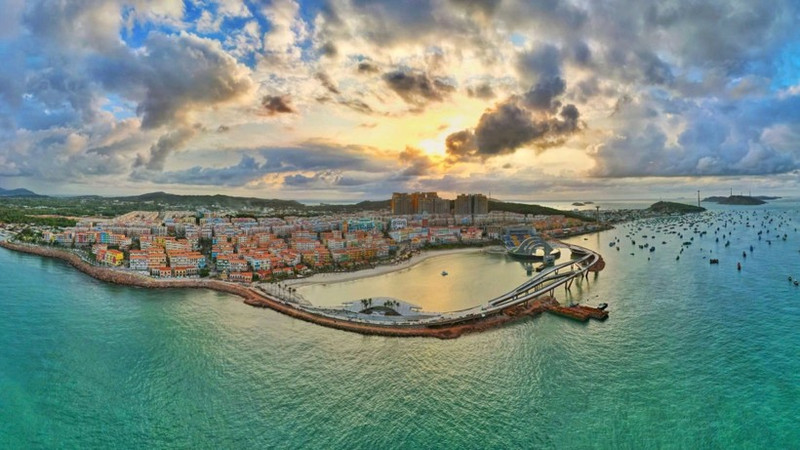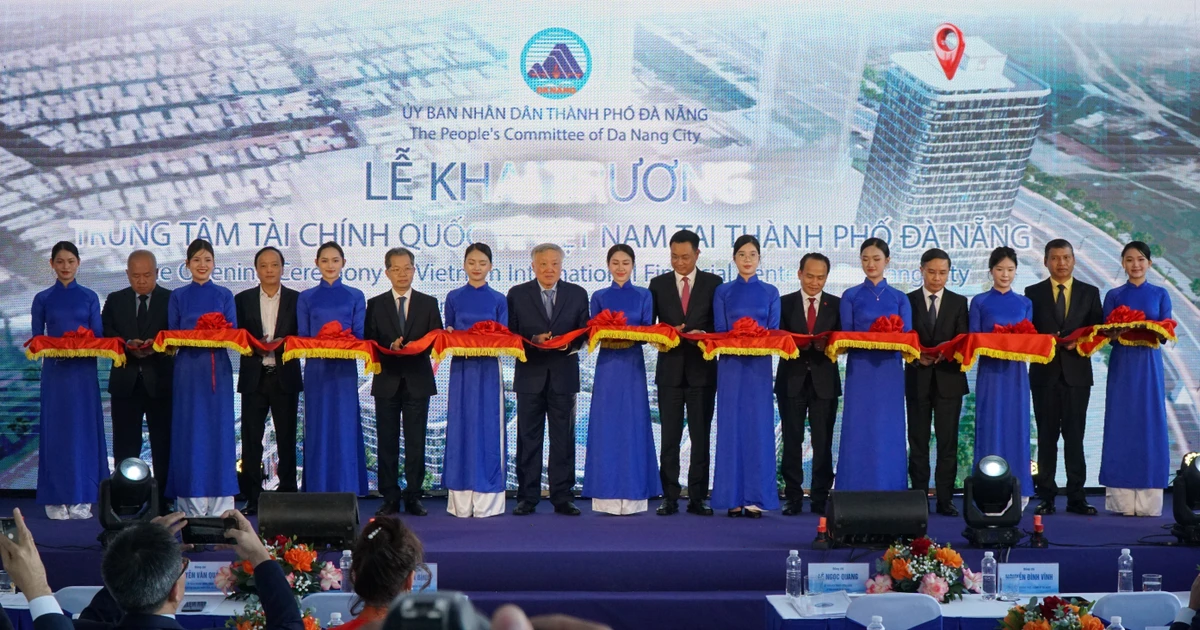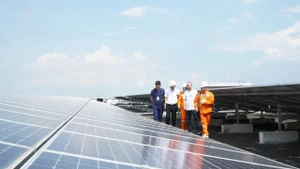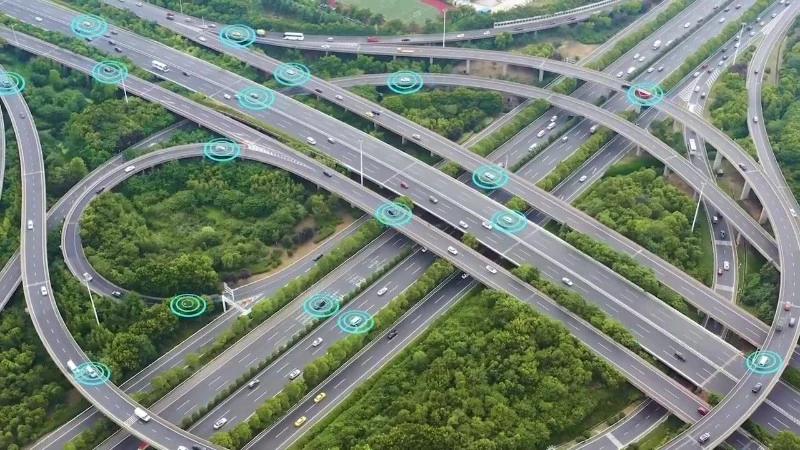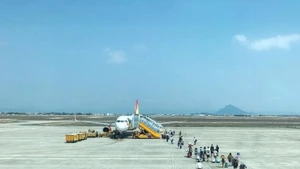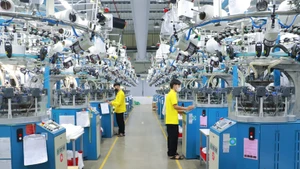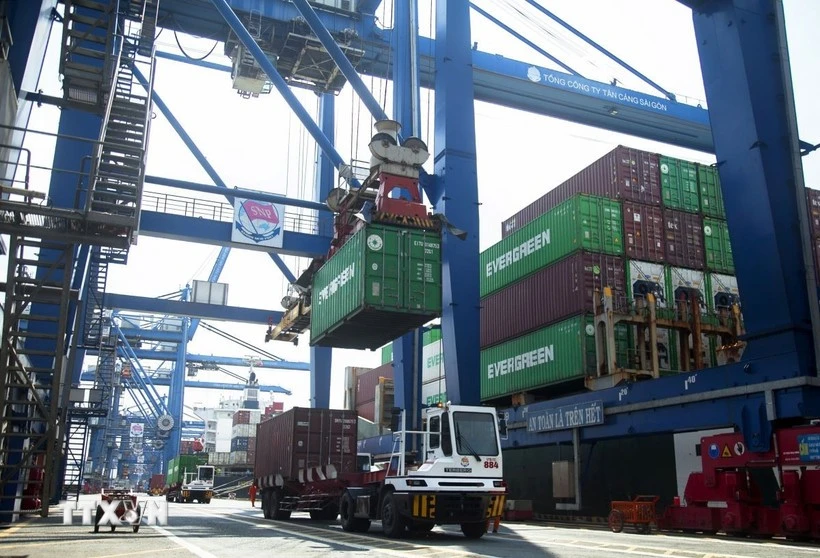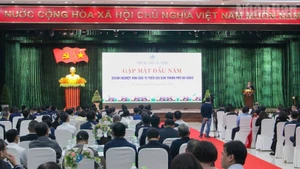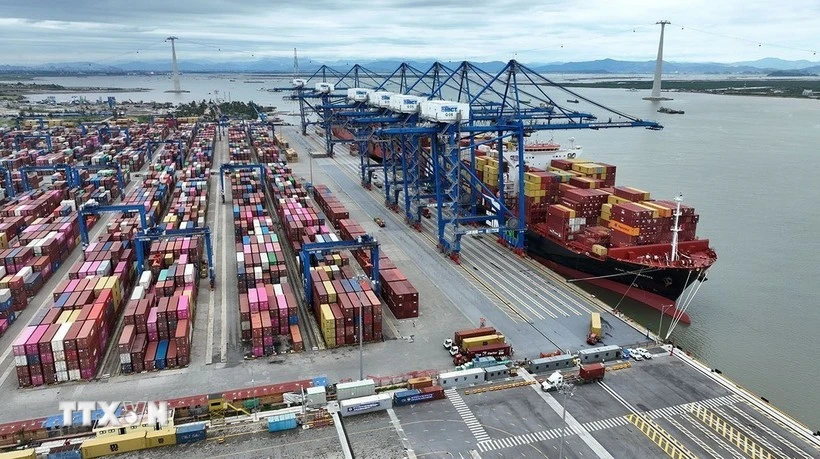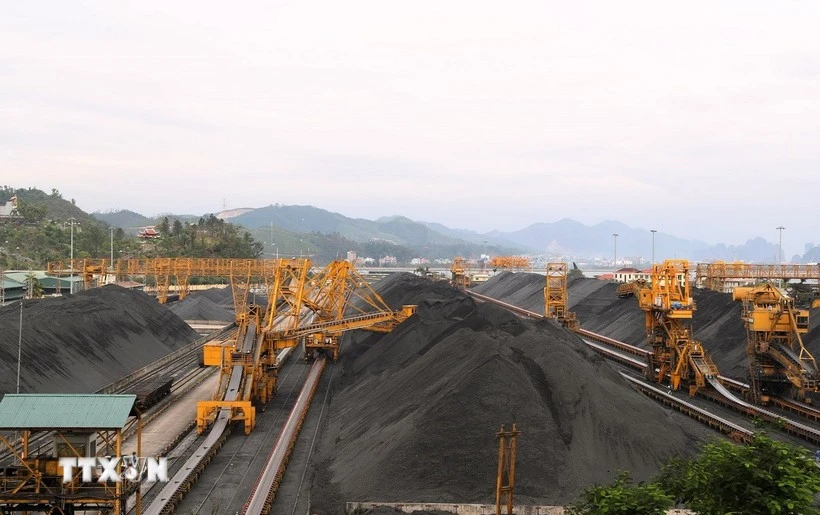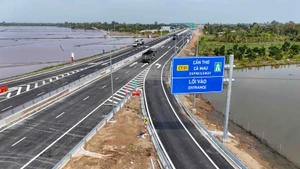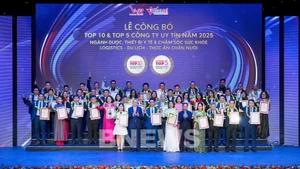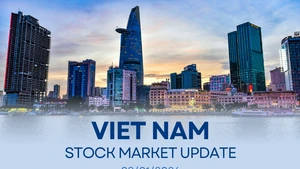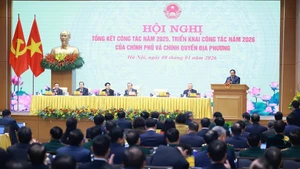Following its administrative merger with Kien Giang Province, An Giang now covers an area of around 9,890 square kilometres and has a population of nearly five million. Its gross regional domestic product (GRDP) is valued at more than 11 billion USD, while annual budget revenue stands at about 26.5 trillion VND (1 billion USD).
Outstanding potential
During the seventh lunar month this year, Tran Thi My Dung from Dong Nai Province, visited Cam Mountain tourist site in An Giang with her family for the fifth time. “Every time I come here to offer incense and pray for my family’s health and peace, I feel truly at ease,” she shared.
Like Dung, many pilgrims also come to the “roof of the southwestern region” to enjoy the fresh air at nearly 700 metres above sea level, immerse themselves in the spiritual tourism atmosphere with various Buddhist temples and gaze out towards the mist-shrouded peak of Vo Bo Hong.
Guiding us along winding, mist-veiled paths, Nguyen Vuong Linh of the Cam Mountain Tourist Site Management Board explained: “From the summit of Cam Mountain, one can take in sweeping views of the An Giang plain, the That Son range, and, in the distance, neighbouring Cambodia.”
From this summit, we travelled further west to Ha Tien and Kien Luong on the Gulf of Thailand. Duong Hong Diep, a local resident, guided us through the famed “Ten Sights of Ha Tien,” including Thach Dong, Da Dung Mountain, Tam Bao Temple, and the Mac Cuu Tomb. Nearby lie the mystical Mo So Cave, the Cave Temple, and the renowned Phu Tu Islet. Pointing seaward, he added: “Further out is the mysterious Pirate Island, which intrigues many visitors. Ha Tien and Kien Luong attract travellers with their stunning mix of mountains, forests, seas, and islands.”
According to Bui Quoc Thai, Director of An Giang’s Department of Tourism, beyond its coastal, spiritual, and cultural tourism strengths, the province also boasts rich mountain-forest ecosystems with diverse flora and fauna, offering vast potential for eco-tourism stretching from sea to forest.
“Some joke that in An Giang, visitors can experience everything from a ‘fairyland’ to a ‘paradise of sea and islands’,” Thai said with a smile.
With these abundant natural advantages, the province welcomed more than 18 million visitors in the first eight months of 2025, including over 1.1 million international arrivals. Tourism revenue reached 47.7 trillion VND (1.8 billion USD).
An Giang welcomed more than 18 million visitors in the first eight months of 2025, including over 1.1 million international arrivals. Tourism revenue reached 47.7 trillion VND (1.8 billion USD).
We then visited the green mussel rafts of Ho Van Trung in Kien Luong Commune, where the sky meets the open sea. Trung explained that hundreds of rafts now farm lemonfish alongside mussels in the area. “I’ve invested in tens of thousands of ropes for mussel farming. Feeding on plankton in seawater, the mussels grow quickly. With prices at about 10,000 VND per kilogram, I expect to harvest within a month and earn several billion VND,” he said confidently.
Marine aquaculture is seen as a sustainable path for An Giang’s fisheries sector amid declining wild catches. In 2025, the province’s seafood output is estimated at nearly 1.6 million tonnes, including 420,000 tonnes from fishing and 1.15 million tonnes from aquaculture.
An Giang is also synonymous with vast rice fields heavy with grain. Today, it is the nation’s rice bowl, contributing to food security and exports, with a cultivation area of nearly 1.3 million hectares. In 2025, output is expected to exceed 8.8 million tonnes.
Breakthrough solutions
An Giang has more than 200 kilometres of coastline, a maritime area of over 63,000 square kilometres, and nearly 150 kilometres of land border with Cambodia, giving it a strategic location and international potential.
Nguyen Tien Hai, Secretary of the An Giang Provincial Party Committee, said: “An Giang aims by 2030 to become one of the most developed provinces nationwide, and a strong centre of the national maritime economy.”
“In the time ahead, the province will promote border trade and serve as a gateway for commerce and cooperation with Cambodia. It will develop comprehensive socio-economic infrastructure resilient to climate change; accelerate digital transformation in education and healthcare; preserve and promote traditional cultural values; maintain defence and security while proactively expanding external relations; and ensure social welfare and improved living standards for the people,” he stressed.
To realise these aspirations, An Giang has mapped out key measures across all sectors. According to Le Huu Toan, Director of the An Giang Department of Agriculture and Environment, the province’s marine farming plan sets a target of 14,000 marine cages by 2030, including 6,600 high-tech cages. Already, five enterprises have been approved to implement marine farming projects spanning nearly 3,000 hectares with investment of nearly 1.2 trillion VND, and expected annual output of over 73,000 tonnes.
The province is also focusing on its tourism development plan for 2025-2030, with a vision to 2035, aiming to fully tap its potential, especially by expanding tourism space for the new era.
As of August 2025, An Giang had attracted 317 tourism projects covering 9,993 hectares with total investment of nearly 402.2 trillion VND. By 2030, the province targets 39.5 million visitors, including more than three million international arrivals, with total revenue of 108.45 trillion VND.
“An Giang is planning smart urban tourism spaces in its key tourism zones. At the same time, it will promote spiritual, eco-experience and multicultural tourism, combining preservation with development, grounded in three pillars: a visitor-centred economy built on value chains of tourism products; high-quality local human resources; and comprehensive, modern and well-connected infrastructure,” said Thai.
An Giang is planning smart urban tourism spaces in its key tourism zones. At the same time, it will promote spiritual, eco-experience and multicultural tourism, combining preservation with development, grounded in three pillars: a visitor-centred economy built on value chains of tourism products; high-quality local human resources; and comprehensive, modern and well-connected infrastructure.
Bui Quoc Thai, Director of An Giang’s Department of Tourism
At present, the 51-kilometre-long, 17-metre-wide Lo Te-Rach Soi Highway is being urgently upgraded. To mark the upcoming Provincial Party Congress for the 2025-2030 term, An Giang has broken ground on projects to serve APEC 2027, including the expansion of Phu Quoc International Airport, Provincial Road 975, APEC Boulevard, Cua Can Reservoir, APEC Convention Centre, and the An Bien-Rach Gia Bridge. These projects are expected to help the borderland region take off.
An Giang is striving for an average economic growth rate of at least 10% over the next five years. By 2030, per capita income is expected to reach at least 7,500 USD. The province envisions a three-tier development structure: the “delta tier” for high-tech agriculture; the “border tier” for border-gate economy and trade; and the “sea-island tier” for tourism, logistics and renewable energy.
This new structure is defined through five strategic economic zones: Rach Gia as the centre of administration, logistics and maritime economy; Phu Quoc as a national and international general tourism and service zone; Long Xuyen as the hub of processing and high-tech agriculture; Chau Doc as a centre of tourism and border trade; and Ha Tien focusing on maritime economy and international trade.
These zones are linked by strategic infrastructure corridors such as the Chau Doc-Can Tho-Soc Trang Expressway, the Lo Te-Rach Soi Highway, and the Ha Tien-Rach Gia-Bac Lieu Highway.
Today, An Giang is not only large in area but also a land of new opportunities. With clear goals, strong aspirations, a shared vision, coordinated action, and firm determination across the political system, An Giang is striving to become one of the most developed provinces nationwide by 2030.
